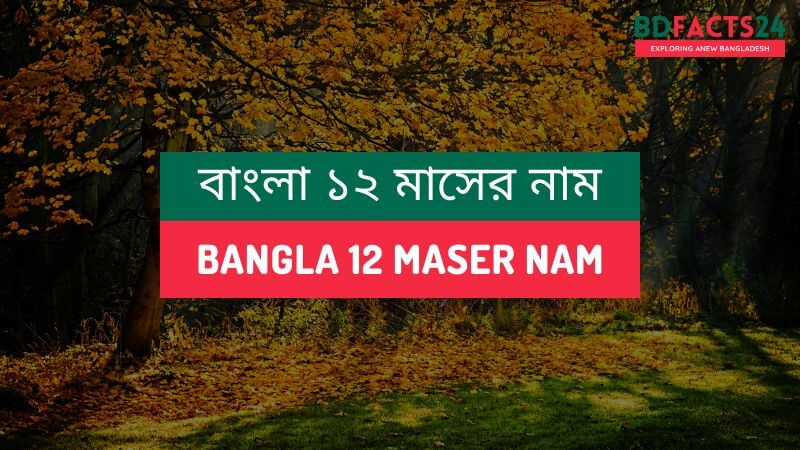Paragraph writing is an essential skill that every student must master, as it is a fundamental part of academic writing.
In this article, we will look at examples of “Paragraph on Railway Stations” in Bangladesh that students can reference when writing about Bangladesh railway stations.
Example 01
Railway stations in Bangladesh are an integral part of the country’s transportation system. These stations connect various parts of Bangladesh with each other and provide easy access to neighboring countries like India and Myanmar.
The railway system in Bangladesh dates back to the British colonial era and has since undergone significant modernization. Today, many of the major cities in Bangladesh have their own railway stations, which serve both passenger and freight trains. At these stations, travelers can find a range of facilities such as waiting rooms, ticket counters, food stalls, restrooms, and luggage storage areas.
Despite the growing popularity of road transport, railway transport remains a preferred mode of travel for many people in Bangladesh due to its affordability, safety, and reliability.
Example 02
Railway stations in Bangladesh are a reflection of the country’s rich cultural heritage and historical legacy. These stations not only serve as vital transportation hubs, but they are also landmarks that tell the story of Bangladesh’s development over the years.
Many of these stations have been in operation for decades, and their architecture and design showcase a mix of traditional and modern styles. The bustling activity at these stations is a testament to the importance of rail transport in the country’s economy and the livelihoods of its people. The station staffs work tirelessly to ensure that trains run on time, and passengers are provided with necessary amenities and services.
Moreover, the railway system in Bangladesh has been instrumental in connecting the country’s rural and urban areas, promoting trade and commerce, and fostering social and cultural exchange between different communities. In essence, the railway stations in Bangladesh are more than just places to catch a train, they are a symbol of the country’s identity and spirit of progress.
Example 03
Railway stations in Bangladesh are an important mode of transportation for both local commuters and long-distance travelers. The railway network in Bangladesh spans over 2,800 kilometers and connects major cities like Dhaka, Chittagong, Rajshahi, Khulna, and Sylhet.
The railway system has been a vital part of the country’s economy and infrastructure since the British colonial period. Today, railway stations offer modern amenities such as air-conditioned waiting rooms, clean washrooms, and food stalls serving traditional Bangladeshi cuisine. Many of the stations are also equipped with free Wi-Fi, enabling passengers to stay connected while they travel.
Despite facing challenges such as outdated equipment and infrastructure, the railway system in Bangladesh remains an affordable and convenient option for many citizens who rely on it for their daily commute or long-distance travel.
Example 04
Railway stations in Bangladesh are not only transportation hubs but also cultural and historical landmarks. Many of the stations were built during the British colonial period and feature striking architecture that reflects the country’s rich history.
For example, the Chittagong railway station is a beautiful red-brick building with arched windows and ornate detailing, while the Joydebpur railway station boasts a distinctive peaked roof and intricate floral motifs. In addition to their architectural significance, railway stations in Bangladesh also play an important role in connecting people and communities.
They serve as gathering places where locals come to catch up on news and socialize with one another. From bustling urban terminals to quiet rural stops, each railway station in Bangladesh has its unique charm and character, making them an integral part of the country’s landscape and culture.
Example 05
Railway stations in Bangladesh are an essential component of the country’s transport infrastructure, providing vital links between various regions and communities. These stations are characterized by their bustling atmosphere and diverse crowd, with people from all walks of life using them to travel for business, leisure, or personal reasons.
The stations are equipped with a wide range of facilities, including ticket counters, waiting rooms, food stalls, and shops, catering to the needs of passengers. The railway system in Bangladesh has undergone significant modernization in recent years, with the introduction of new trains, routes, and technology. However, the stations themselves still retain their unique character and charm, reflecting the country’s rich cultural heritage and history.
The railway system has played a crucial role in Bangladesh’s economic development, facilitating trade and commerce and providing affordable transport options to millions of people. The stations also serve as hubs for social and cultural exchange, bringing together people from different regions and fostering a sense of unity and harmony. In essence, railway stations in Bangladesh are not just transportation hubs; they are vibrant spaces that reflect the country’s progress and spirit of resilience.
Example 06
Railway stations in Bangladesh are not just a mode of transportation but also a reflection of the country’s diverse and vibrant culture. Every day, thousands of people from different ethnicities, religions, and backgrounds travel through these stations, creating a unique blend of languages, customs, and traditions.
Railway stations provide a platform for cultural exchange and dialogue, allowing people to learn about and appreciate each other’s differences. For instance, during major festivals such as Eid ul-Fitr and Durga Puja, railway stations become lively hubs where people come together to celebrate and share food and sweets.
In addition, many stations also feature murals and artwork that showcase local art and crafts. Thus, railway stations in Bangladesh serve as a microcosm of the country’s rich cultural heritage and diversity, bringing people together and fostering social cohesion.
Example 07
Railway stations in Bangladesh are a hub of activity and a symbol of the country’s rich history and culture. These stations serve as important transportation links connecting various regions and communities across the country. The railway system in Bangladesh has a long and fascinating history, and the stations themselves are architectural wonders, showcasing a mix of colonial, traditional, and modern styles.
The stations are vibrant spaces, bustling with people from all walks of life, making their way to different destinations. The staff at these stations work tirelessly to ensure that passengers have a comfortable and safe journey, providing essential services and facilities such as ticket counters, waiting rooms, food stalls, and shops. The railway system has played a significant role in the country’s economic development, promoting trade and commerce, and facilitating access to education and healthcare.
The stations also serve as centers for social and cultural exchange, bringing together people from different regions and fostering a sense of unity and diversity. In essence, railway stations in Bangladesh are not just transportation hubs, but they are also important landmarks that showcase the country’s progress, resilience, and spirit of innovation.
Example 08
Railway stations in Bangladesh are an integral part of the country’s transportation system, connecting major cities and towns across the country. The railway network in Bangladesh is operated by the state-owned Bangladesh Railway, which manages over 2,800 km of track and 1,000 stations.
Many of these stations have a rich history, dating back to the British colonial era, and showcase the unique architecture that defines the period. Some of the popular railway stations in the country include Chittagong Railway Station, Dhaka Cantonment Railway Station, Sylhet Railway Station, and Rajshahi Railway Station, all of which serve as important hubs for both passengers and cargo.
Moreover, with the introduction of modern amenities such as air-conditioned coaches and high-speed trains, Bangladesh Railway is constantly evolving to meet the demands of its growing population while preserving its rich heritage.
Example 09
Railway stations in Bangladesh are not just places to catch a train; they are the lifeline of the country’s transportation system. These stations serve as essential links that connect the remotest corners of the country to its bustling cities, providing an affordable and efficient mode of transport. The stations themselves are a blend of old and new, reflecting the country’s rich cultural heritage and modernization efforts.
The staffs at these stations work round the clock, ensuring that passengers have a safe and comfortable journey. From ticket collectors to vendors, porters, and security personnel, each member of the station staff plays a critical role in ensuring the smooth operation of the railway system. The railway system has been instrumental in promoting economic growth, facilitating trade and commerce, and improving access to education and healthcare.
The stations themselves are also centers of social and cultural activity, providing spaces for people from different regions to come together and share their ideas and traditions. The railway stations in Bangladesh are not just infrastructure; they are a symbol of the country’s spirit of resilience, innovation, and progress.
Example 10
Railway stations in Bangladesh are not just transportation hubs but also cultural landmarks. They connect people from all walks of life and provide an opportunity to experience the country’s diverse landscape, culture, and traditions.
The railway system in Bangladesh has been instrumental in promoting economic development and growth in the country, enabling efficient movement of goods and services across different regions. Furthermore, many railway stations in Bangladesh feature unique architectural designs that reflect the country’s rich history and heritage.
For example, the Comilla Railway Station is known for its distinct red-brick building with a Victorian-style clock tower, while the Joydebpur Railway Station boasts of its colonial-era design with large verandas and high ceilings. As Bangladesh continues to modernize its railway network, these stations will remain a crucial part of the country’s transportation infrastructure and cultural heritage.














